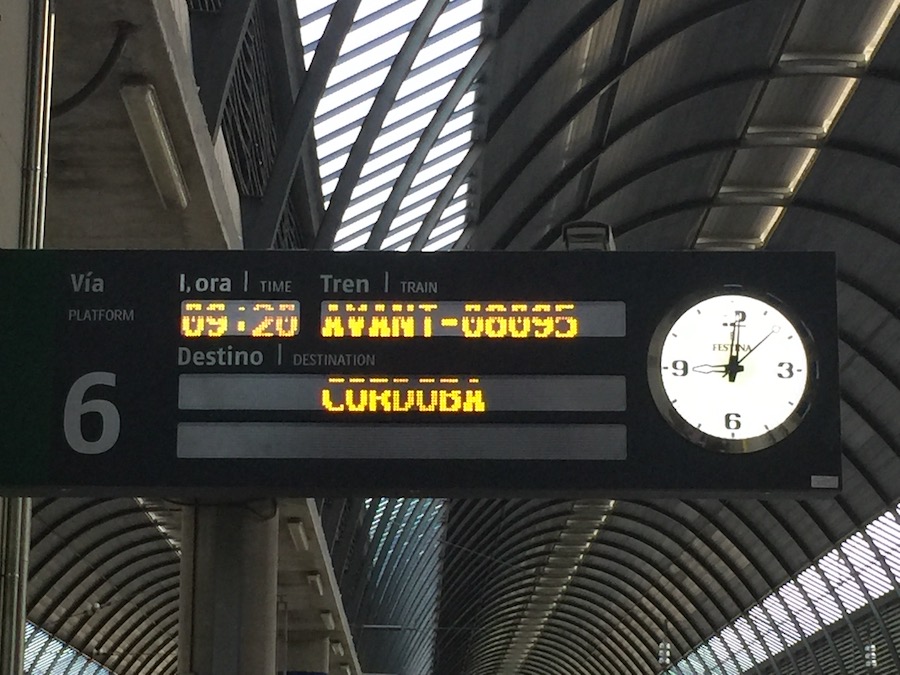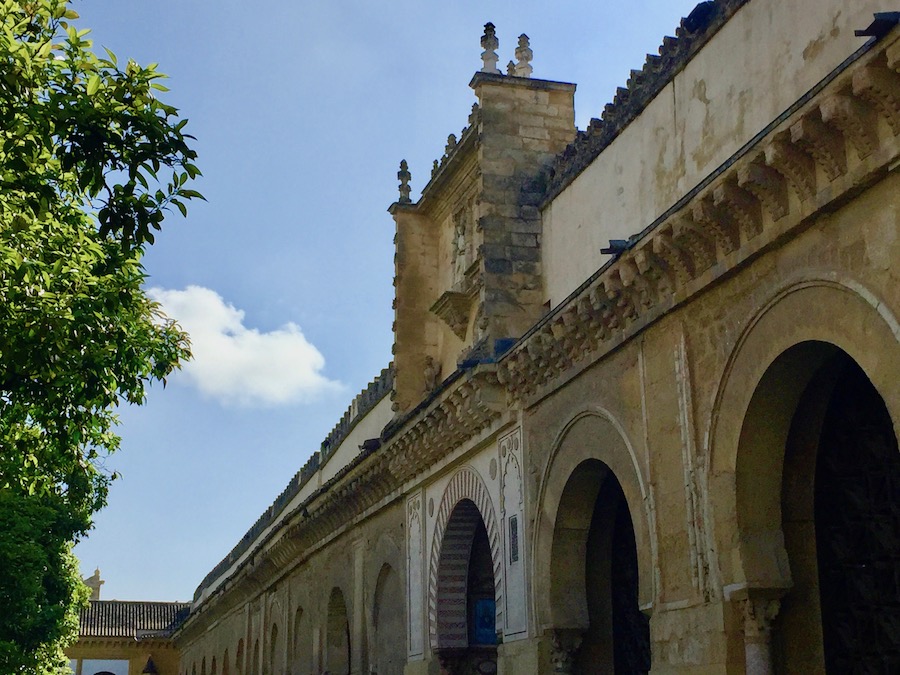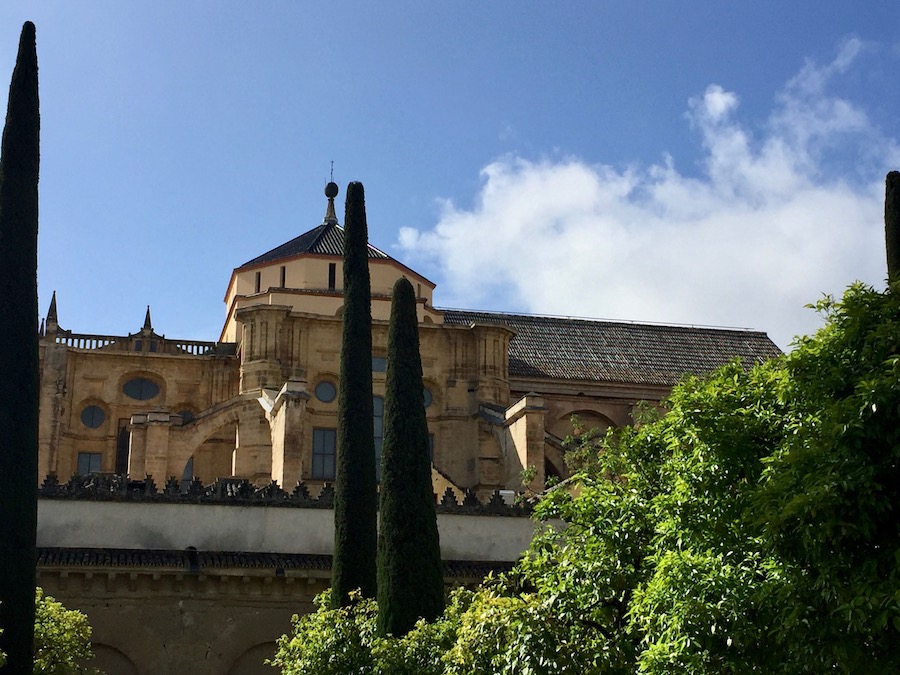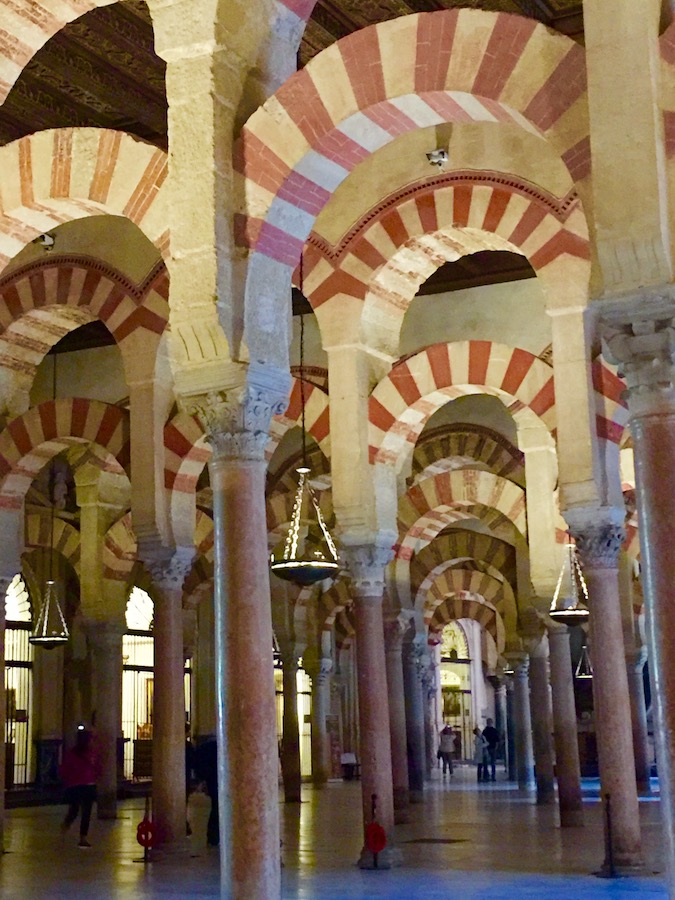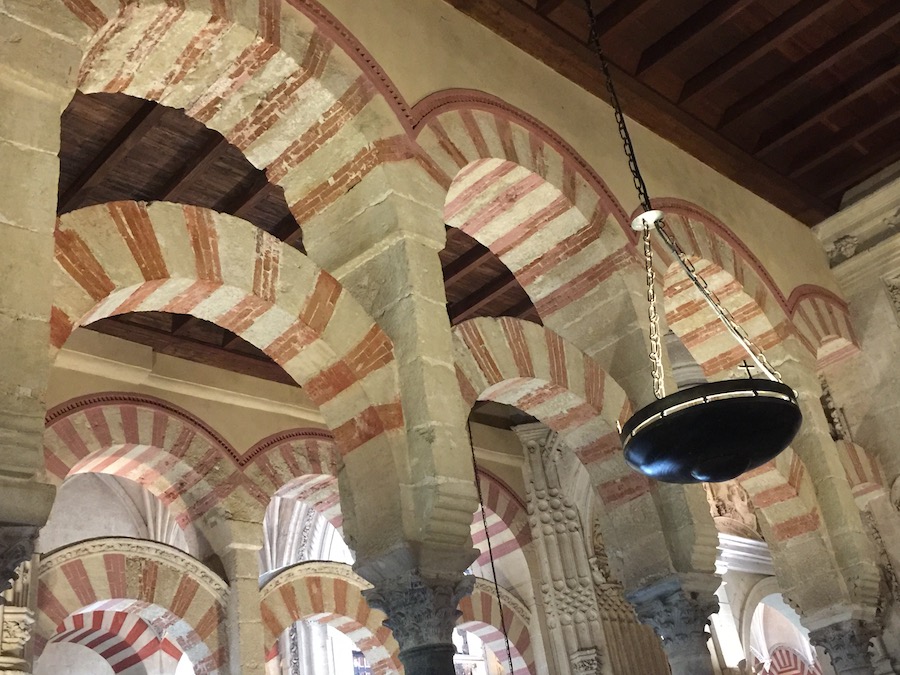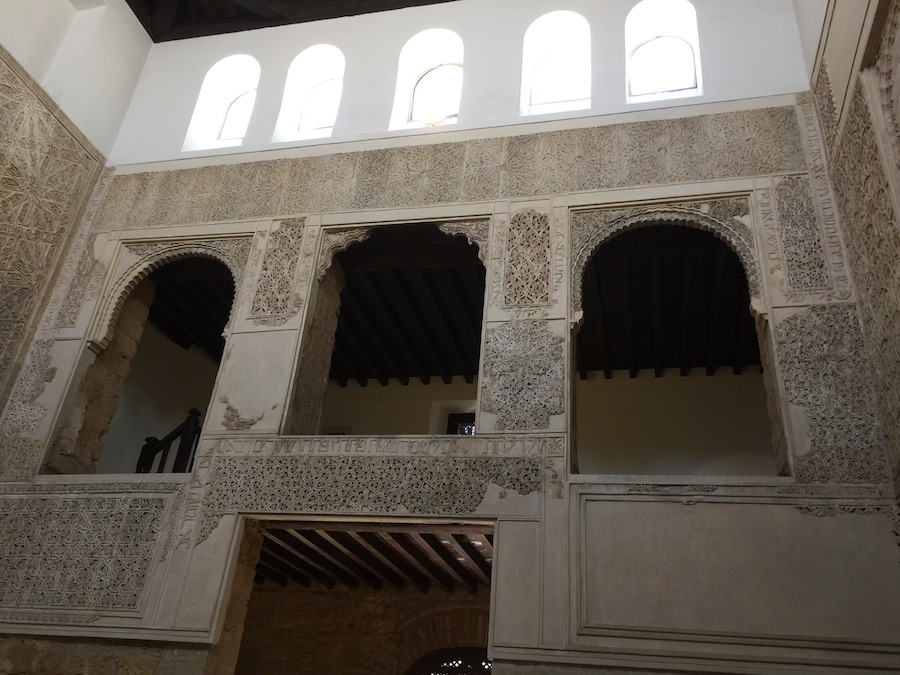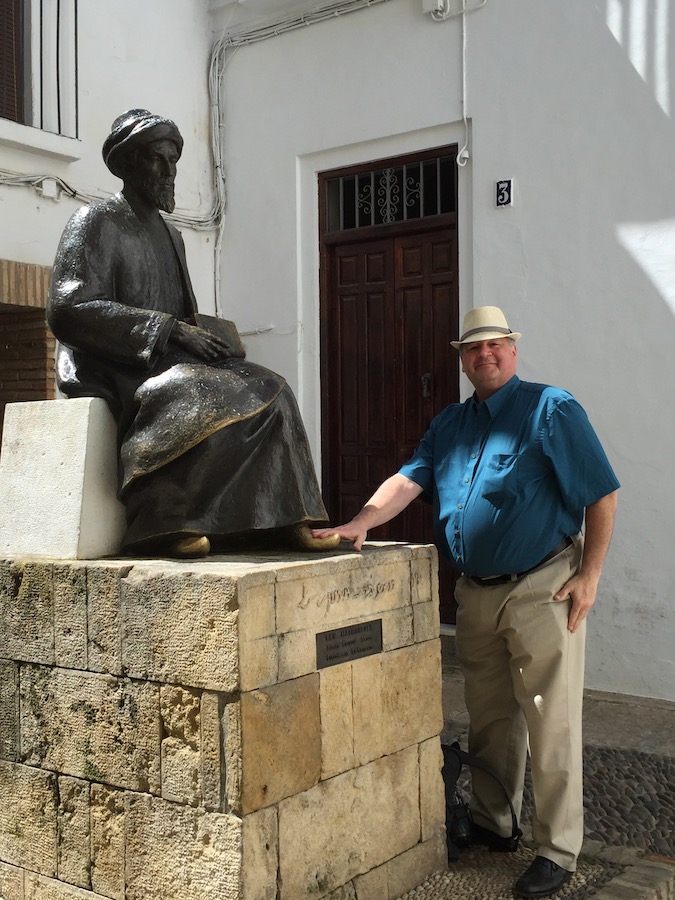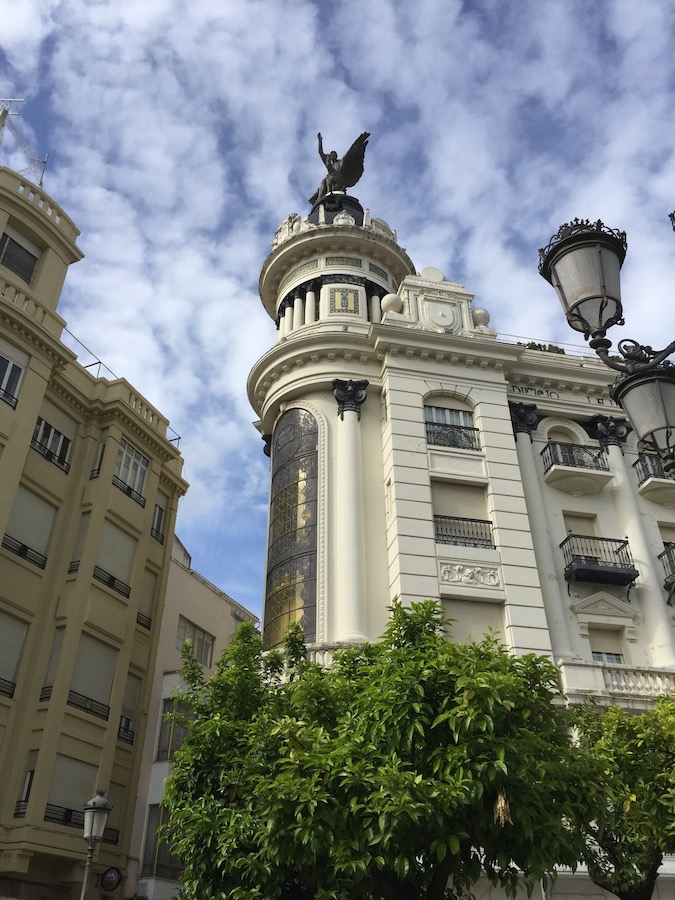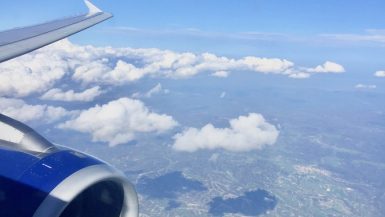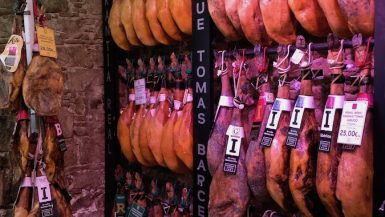April 1, 2016
We love European transportation – it is so orderly and on time, especially the train systems. However, sometimes boarding a train here can be anxiety-ridden – reading the board, finding your track, getting on and off in the short amount of time the train is in the station. But there was none of that at Santa Justa (Sevilla).
The rail station isn’t as large or complicated as some we’ve traveled through. It has a few nice places to grab snacks or a meal, including a very modern, comfortable McDonald’s that even serves beer all day, and has clear signage indicating which way to go to get to specific tracks. After going through a security screening, something I don’t believe I’ve done at other stations, we boarded, found our comfy seats, and dozed off for the 45-minute ride to Córdoba.
The main attraction in Córdoba is the Mezquita, and that’s where you will find most of the tourists and tour groups, including lots of school children on field trips. While most of the tour books call it the Mezquita, a more exotic sounding name, all pamphlets and the people at the site call it the Cathedral.
The Mezquita has quite an interesting past – it was a church, then a mosque, then more of a mosque, then much more of a mosque, and then a Cathedral. As with many locations, the house of worship changed depending on who controlled the area. Beginning as San Vicente Basilica, built by the Visigoths in the 6th century, it was destroyed during the Islamic period in order to build a mosque in 785.
Initially built to provide space for a few hundred worshippers, as Emirate succeeded Emirate, they tried to outdo each other. As they did, they formed a grander and grander space until the mosque was large enough for 40,000 worshippers. That’s a lot of space, but it is so open that inside it doesn’t seem as vast as it is. The mosque is all pillars and arches with the primary colors being pink/red and a whitish/tan. It is very subdued and shadowy lending itself to somber prayers, which occurred several times a day.
And then came the Christians in 1236, who took over Córdoba and erected chapels among the arches. In 1523, the main church began construction smack dab in the middle of the old mosque. While the mosque was only 30 feet at its highest point, the Cathedral in the middle rises to 130 feet at the top. It is ornate and reflects several styles included Baroque and the Renaissance. But it is the contrast between the cool, calmness of the mosque to the absolute bling of the Cathedral that is most shocking to the system.
We spent about 2 hours wandering around. We wanted more time to soak it all in, but we needed to return our audioguides so we weren’t charged extra. Next time, we would enter during the free 8:30-9:30 a.m. timeframe (there is no entry fee during mass) and spend a few hours wandering and contemplating.
We had a bit of time to kill before our reserved time to trek up the bell tower (separate entry price), so we sat on the steps outside the walls of the courtyard watching tourists go by. We felt very secure as there were two policemen armed with automatic weapons standing not 10 feet away from us also watching the tourists walk by.

Then up, up we went into the bell tower climbing several sets of stairs, first wood stairs and then slippery, worn stone stairs. We walked past the old mosque’s minaret, which is encased within the bell tower until we were at the top which houses the church bells. Despite my fear of heights, I can say, “What a view!” I think we were able to see all 25 churches in old town Córdoba from that vantage point.
Jaimie, our guide from the Sevilla food tour, had shared with us his favorite tapas restaurants so, we went off in search since they were located close to each other down by the river. Garum 2.1 was our choice, and it did not disappoint.
We tried their version of salmorejo which they served with red wine gelatin, shaved radish and black sesame seeds on top – very fresh, and the bursts of flavor from the gelatin added a different dimension. The Russian salad made with house marinated fish; we only hoped that the fish had not come out of the murky green river we had just walked along. The special of the day was lamb ribs over a raisin/cinnamon rice – the meat was seared perfectly and was succulent, but a little salty. The Cordobian oxtail stew was hearty and so tender the meat fell off the bone. The last dish we shared was twice fried suckling pig over mustard potatoes. We aren’t sure what parts of the pig they served us, but they were excellent, and I’m sure they were kosher (sure). Jaimie sure picked a winner.
Cordoba used to have a large Jewish Quarter, dating back from the late Middle Ages; however, very little is left of the building. We visited the Synagoga, one of only three medieval synagogues in Spain (the other two are in Toledo). It is tiny and very little remains of the carvings and decorations, although what does remain was covered up until it was discovered in the late 19th century. After Jews fled Córdoba during the inquisition, the Synagogue became a church, a hospital, and a shoemaker’s guild.
Down the street, we visited the Casa de Sefarad which does a good job describing Jewish life in Córdoba, the philosophies of Maimonides, and the inquisition’s effects on Jewish people. The extent of discrimination and cruelty against people solely based on their religion always saddens and sickens me. Although the museum is small, we spent a significant amount of time soaking in the information provided. Time well spent in contemplation.
With some more time before our return train, we set off to locate the Plaza de las Tendillas. Based on the map we obtained at the tourist information booth in the morning, we set off in the general direction. We wandered through small streets and alleyways, the names of which were not on our map (not a very detailed map). We would come to a road that was on the map, reorient ourselves, and set off in the general direction again. By doing so, we stumbled across some Roman ruins not marked on any map or in Rick Steves’ book and watched Cordobans going about their daily routines.

And finally, we arrived at the Plaza, rimmed with Art Deco buildings and famous for its clock that chimes the chords of a flamenco guitarist instead of bells at the top of every hour. We sat for a bit, watching children playing in the square.
A stop for a cup of gelato, and we were ready to make our way to the train station… on foot, as we decided to save the 6 euro taxi fare and register some more steps on the pedometer – a total of 6.5 miles for the day. We found our way to the station without incident and located our train platform just like we knew what we were doing. We’ve got this traveling thing down.




